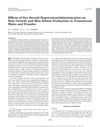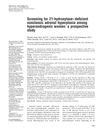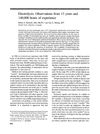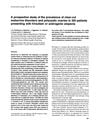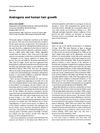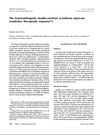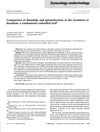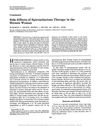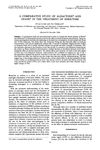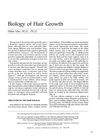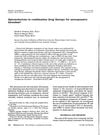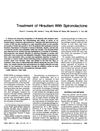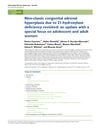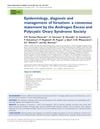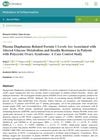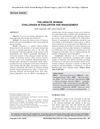The Evaluation and Management of Hirsutism
hirsutism androgen excess polycystic ovary syndrome PCOS nonclassic adrenal hyperplasia hyperandrogenic insulin-resistant acanthosis nigricans syndrome androgen-secreting tumors androgenic drug intake idiopathic hirsutism oral contraceptives gonadotropin-releasing hormone analogues insulin sensitizers spironolactone flutamide mechanical hair removal cosmetic hair removal eflornithine hydrochloride PCOS oral contraceptives GnRH analogues insulin sensitizers spironolactone flutamide hair removal Vaniqa
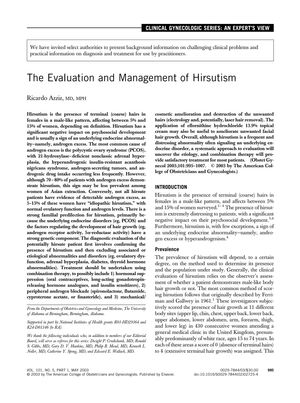
TLDR Hirsutism in women often indicates a hormonal imbalance and can be managed with a combination of hormonal treatments and hair removal methods.
Hirsutism, characterized by the presence of coarse hairs in a male-like pattern in females, affects 5% to 15% of women and is often indicative of an underlying endocrine disorder, primarily androgen excess. The most common cause is polycystic ovary syndrome (PCOS), but other causes include nonclassic adrenal hyperplasia, the hyperandrogenic insulin-resistant acanthosis nigricans syndrome, androgen-secreting tumors, and androgenic drug intake. While 70-80% of women with androgen excess exhibit hirsutism, it is less common in Asian women, and 5-15% of hirsute women have normal androgen levels, termed "idiopathic hirsutism." Hirsutism has a genetic component due to the heritability of conditions like PCOS and hair growth regulatory factors. Diagnosis involves confirming hirsutism and identifying any related disorders. Treatment typically involves a combination of hormonal suppression (e.g., oral contraceptives, gonadotropin-releasing hormone analogues, insulin sensitizers), peripheral androgen blockade (e.g., spironolactone, flutamide), and mechanical or cosmetic hair removal methods. Eflornithine hydrochloride 13.9% cream may also be used for facial hair. A systematic approach to evaluation and combination therapy can effectively manage hirsutism.
